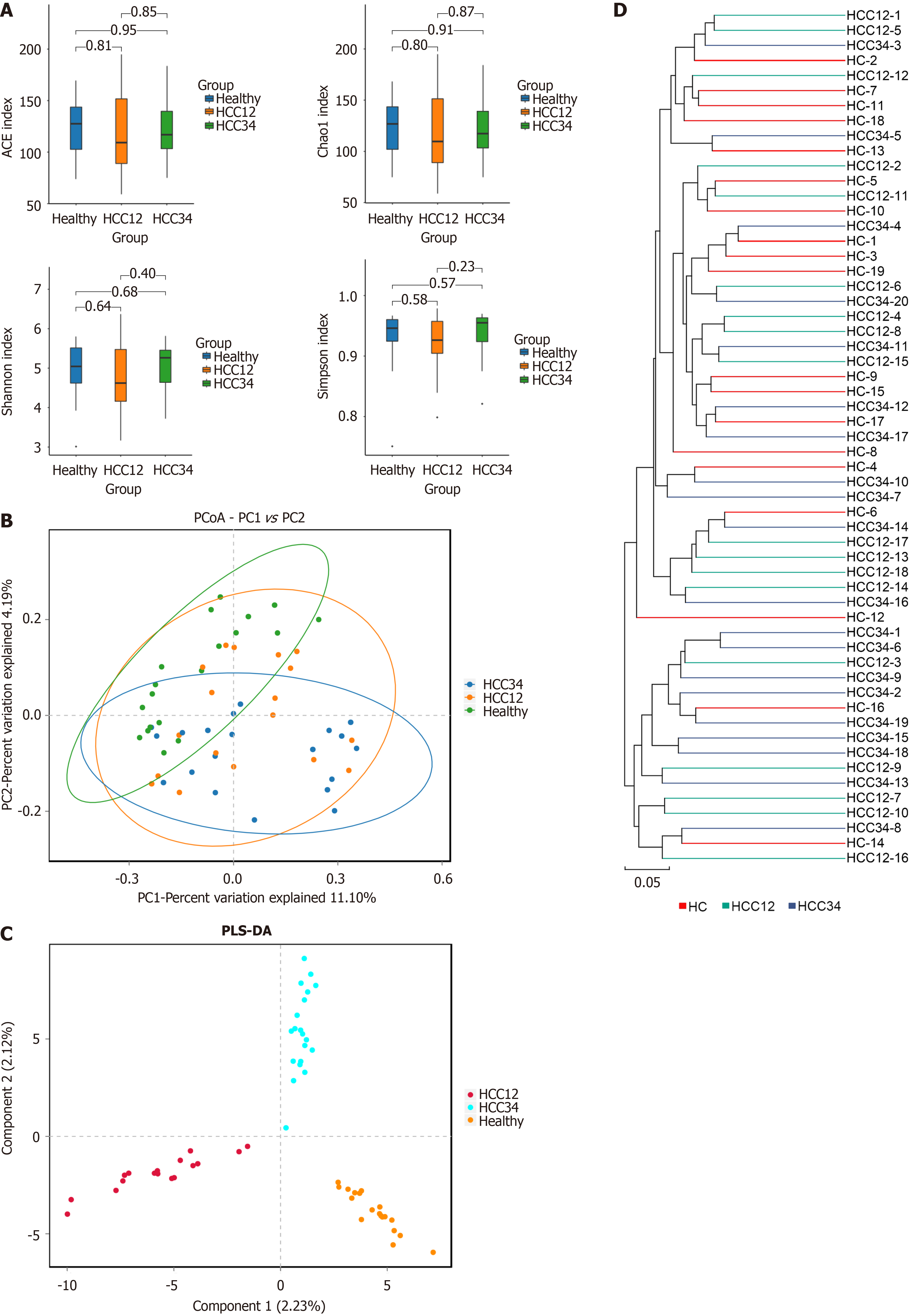Copyright
©The Author(s) 2025.
World J Gastroenterol. Apr 21, 2025; 31(15): 104996
Published online Apr 21, 2025. doi: 10.3748/wjg.v31.i15.104996
Published online Apr 21, 2025. doi: 10.3748/wjg.v31.i15.104996
Figure 3 Alterations of the ecological structure of the intestinal bacteria in patients with hepatocellular carcinoma.
A: Assessment of α-diversity within fecal samples sourced from patients with hepatocellular carcinoma; B: Visualization of unweighted UniFrac principal component analysis scores through a scatter plot; C: Scatter plot of orthogonal partial least squares discriminant analysis of the metabolic profiling of each group; D: Construction of a hierarchical clustering dendrogram utilizing the unweighted pair group method with arithmetic mean. PCoA: Principal component analysis; HCC12: Comprising patients with stage I and II hepatocellular carcinoma; HCC34: Comprising patients with stage III and IV hepatocellular carcinoma; ACE: Abundance-based coverage estimator; PLS-DA: Partial least squares discriminant analysis; HC: Healthy control.
- Citation: Feng J, Wang JP, Hu JR, Li P, Lv P, He HC, Cheng XW, Cao Z, Han JJ, Wang Q, Su Q, Liu LX. Multi-omics reveals the associations among the fecal metabolome, intestinal bacteria, and serum indicators in patients with hepatocellular carcinoma. World J Gastroenterol 2025; 31(15): 104996
- URL: https://www.wjgnet.com/1007-9327/full/v31/i15/104996.htm
- DOI: https://dx.doi.org/10.3748/wjg.v31.i15.104996









